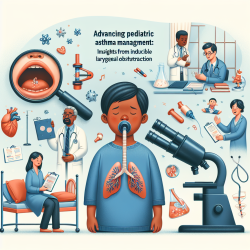Introduction
In the ever-evolving landscape of healthcare, the ability to respond effectively to mass casualty events (MCEs) is crucial. The research article "Mass Casualty Shootings and Emergency Preparedness: A Multidisciplinary Approach for an Unpredictable Event" by Melmer et al. provides valuable insights into the importance of a coordinated, multidisciplinary approach in emergency preparedness. This blog aims to guide practitioners in enhancing their skills by implementing research outcomes and encouraging further exploration into this critical area.
Understanding the Multidisciplinary Approach
The study emphasizes the significance of a multidisciplinary team (MDT) in strengthening emergency responses. A well-coordinated MDT involves healthcare personnel, emergency medical services (EMS), law enforcement, and government agencies working together to optimize life-saving care during MCEs. Practitioners can improve their skills by understanding the roles and responsibilities of each team member and how they contribute to the overall response strategy.
Key Strategies for Practitioners
- Effective Communication: Internal and external communication is vital for coordinating efforts during an MCE. Practitioners should develop skills in clear and concise communication to ensure seamless collaboration among team members.
- Simulation Exercises: Engaging in regular simulation exercises can help identify gaps in preparedness and improve response times. These exercises provide a safe environment for practitioners to practice and refine their skills.
- Triage and Resource Allocation: Understanding triage systems such as SALT (Sort, Assess, Lifesaving Intervention, Treatment/Transport) and START (Simple Triage and Rapid Treatment) is essential. Practitioners should be trained to quickly assess and prioritize patients based on the severity of their injuries.
- Psychological Support: Providing mental health support to survivors and responders is crucial. Practitioners should be equipped with the skills to offer psychological first aid and support to those affected by MCEs.
Encouraging Further Research
While the research by Melmer et al. provides a comprehensive overview of emergency preparedness, it also highlights the need for ongoing research and development in this field. Practitioners are encouraged to delve deeper into the subject, exploring new methodologies and technologies that can enhance emergency response capabilities.
Conclusion
In conclusion, the research article underscores the importance of a multidisciplinary approach in emergency preparedness. By implementing the strategies outlined in the study, practitioners can enhance their skills and contribute to more effective responses during mass casualty events. Continuous learning and collaboration are key to improving outcomes for all involved.
To read the original research paper, please follow this link: Mass Casualty Shootings and Emergency Preparedness: A Multidisciplinary Approach for an Unpredictable Event.










